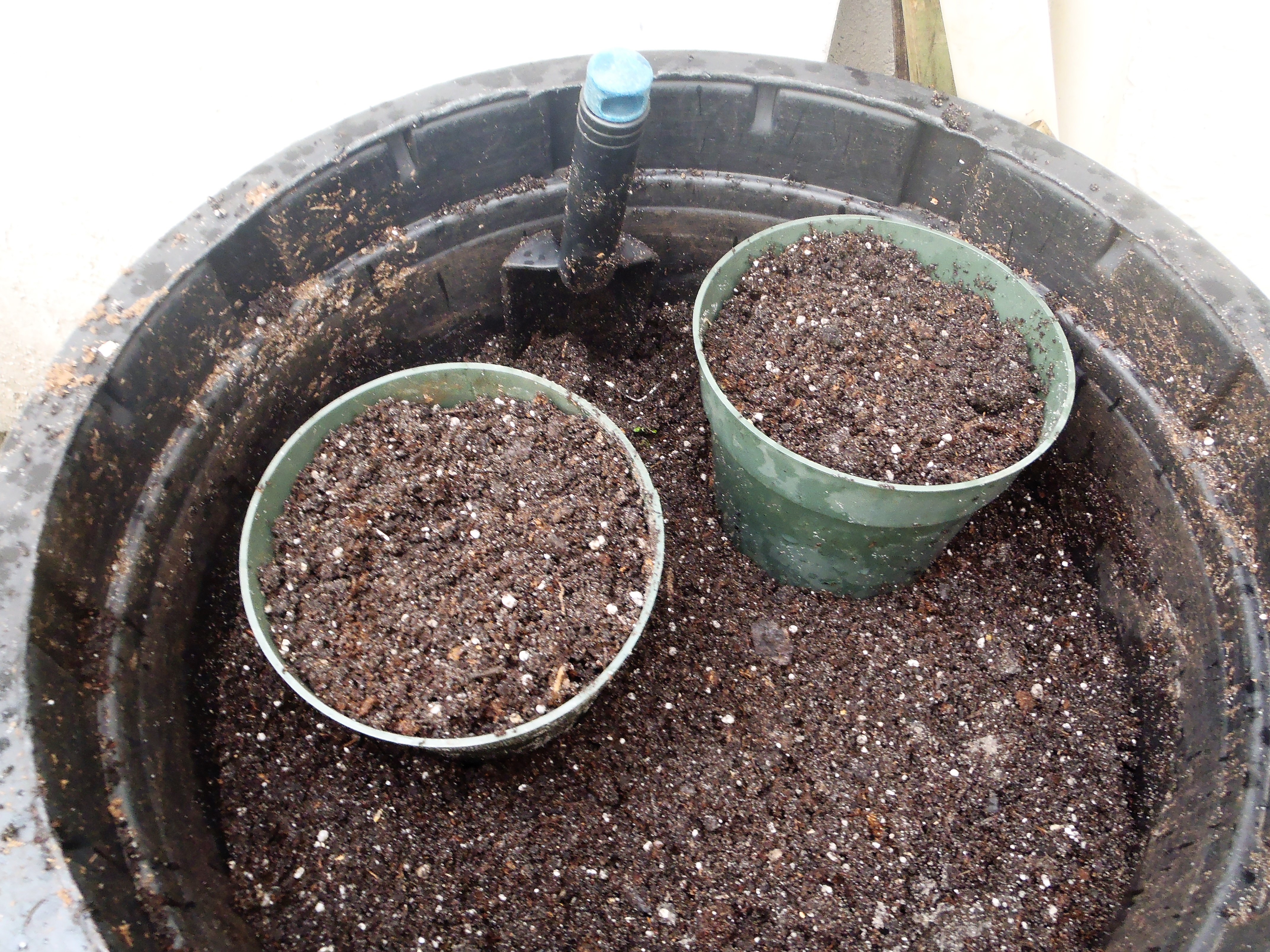Garden subject – Garden Soils
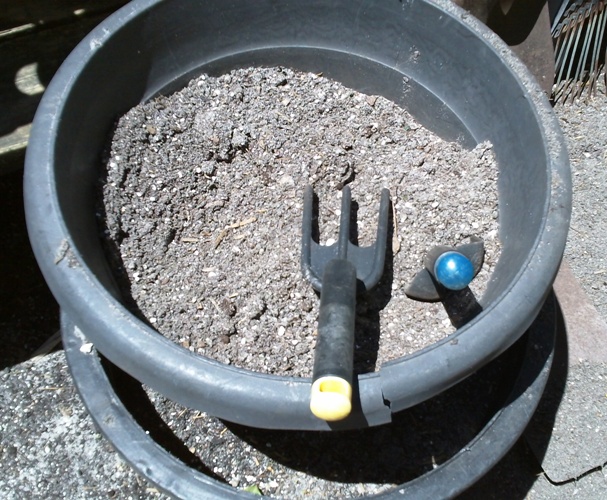
01. Garden Soil.
I have a large plastic pot, shown above, that collects my soil from the Dougherty Garden. As I repot a plant, I’ll do most of the re-potting over this large plastic pot. I’ll tap the pot on the side of the plastic pot and let the whole plant drop onto the soil in this pot so that I can work on the plant. Most of the time, the top level of this pot will have the latest soil mixture.
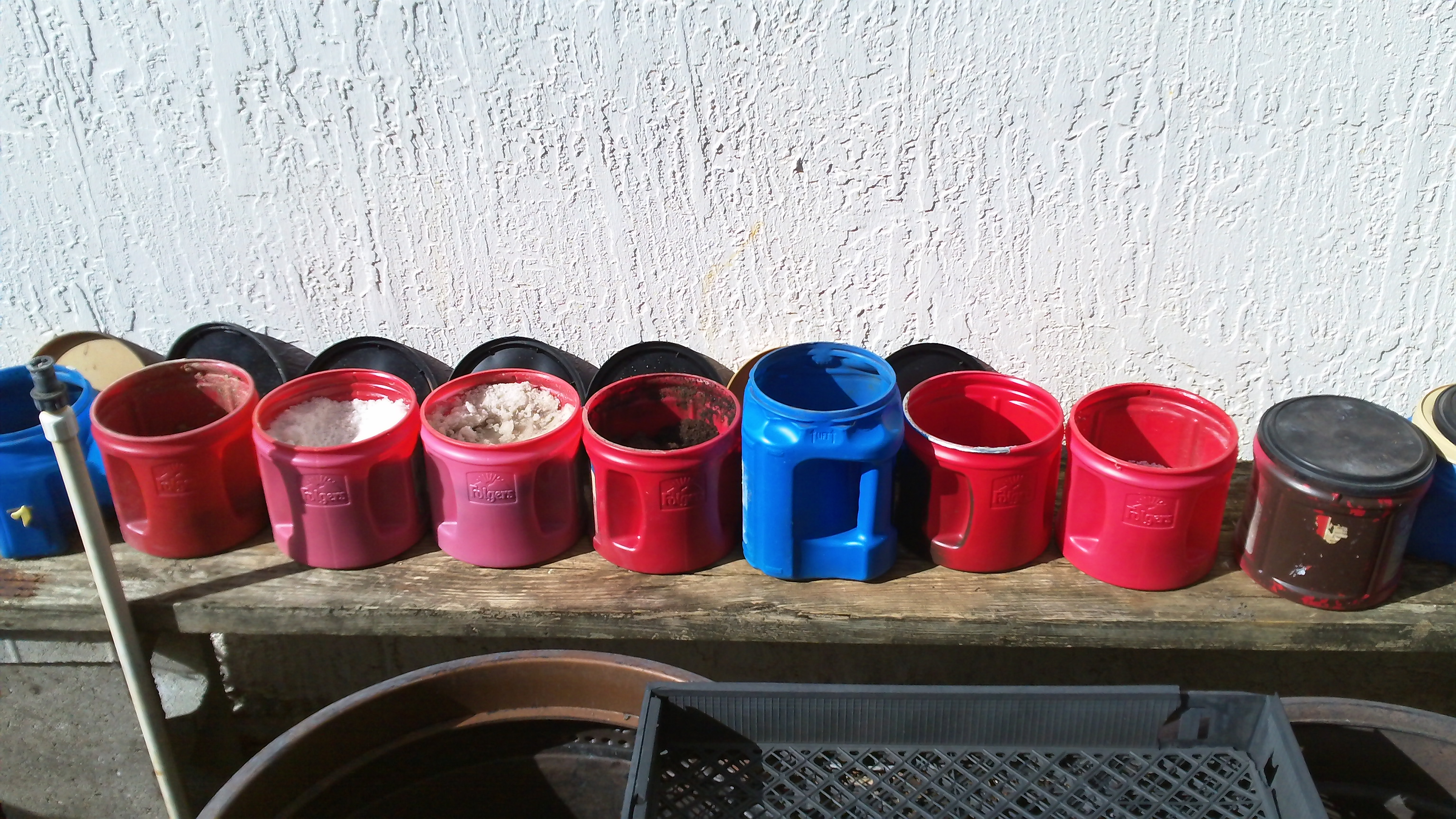
Plastic Coffee Containers
The majority of the soil additives that I use in the garden for soil amendments are maintained in plastic coffee pots. Most of the plastic pots are good for keeping the materials dry but due to the warm Florida sun, some of the items sweat and end up in a liquid form. The two-item that turn to liquid is Manganese and Magnesium. I got used to them in their liquid form.
The following is a compilation of pictures taken over a period of time that details the various components of healthy garden soil for the Dougherty Garden.
02. Assorted Palm Tree Debris.
Section of a rotted-out palm tree trunk that was laying around in the Dougherty Garden for a month or so. One section was completely soft to the touch and fell apart. In the picture on the left are the remnants of what I was able to pull apart from the rotted palm tree section. Most of the material was already broken down into brown dirt-like material.
I don’t have a compost heap in the Dougherty Garden because I usually cut up garden debris and household waste into small pieces and throw them around the garden. The material in the large black pot will be gradually added by hand to each soil mixture a little at a time.

Palm Tree Flowers. Every palm tree puts out a bract of flowers that develop into palm seeds. The Queen palm tree is right in front of the house and throws off these little flowers. Lately, I have been collecting these small cream-colored flowers and adding them a bit at a time to my soil mixture when they are available.

Palm Leaf Base. Another source of palm tree debris is that of the palm tree leaf base which falls readily in the Dougherty Garden. the one that I use a lot is the palm tree leaf from the Washington palm tree. The base of this palm lead is fairly dried out by the time it falls to the ground in the Dougherty Garden. Some parts can be just broken off with my hand and crumble into small pieces. Other pieces are cut off in small pieces as you can see in the above collage. All of these small pieces are gradually added to the soil mixture.
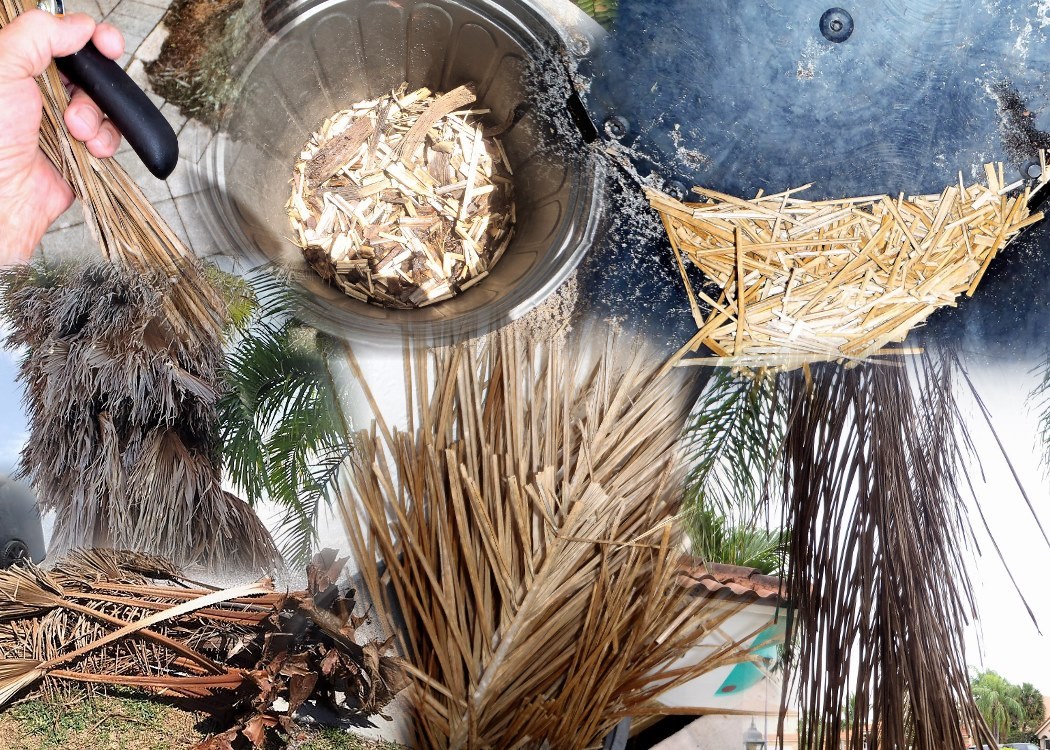
Palm Tree Leafs. The last major palm tree debris that I add to the soil mixture is that of a palm tree leaf. There are quite a few but the most widely available is that of the Queen palm tree leaf which is shown in the above collage. I don’t go crazy doing this but when I have an abundance of palm tree leaves on the ground in front of the house. I cut them with a scissor into small pieces and gradually add them to the soil mixture.
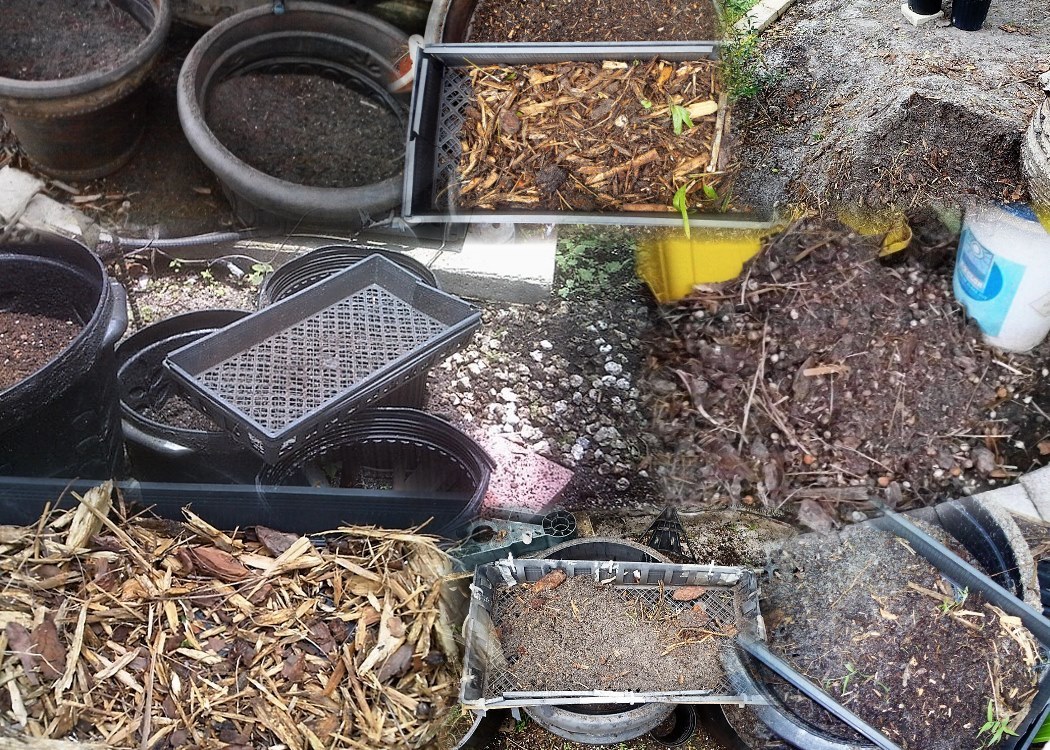
Soil Sifting Debris. A good portion of the soil that returns to the Dougherty Garden over time is that of the soil and goodies that are reclaimed from the process of soil and mulch sifting. I use old plant trays to shake out the top layer of soil and mulch that I use a hand shovel to gather. I do a small section at a time and place this material into the trays that you see above. The debris that drops through the trays is that of soil, small palm debris, and mulch that is literally decomposing over time. All these materials dropped into the large plastic pots will have more soil additives added to make a new soil mixture.

Coffee Grinds. I take my coffee grinds and let them dry out on the wood plank and put them into a small plastic coffee container for use in my soil mixture.
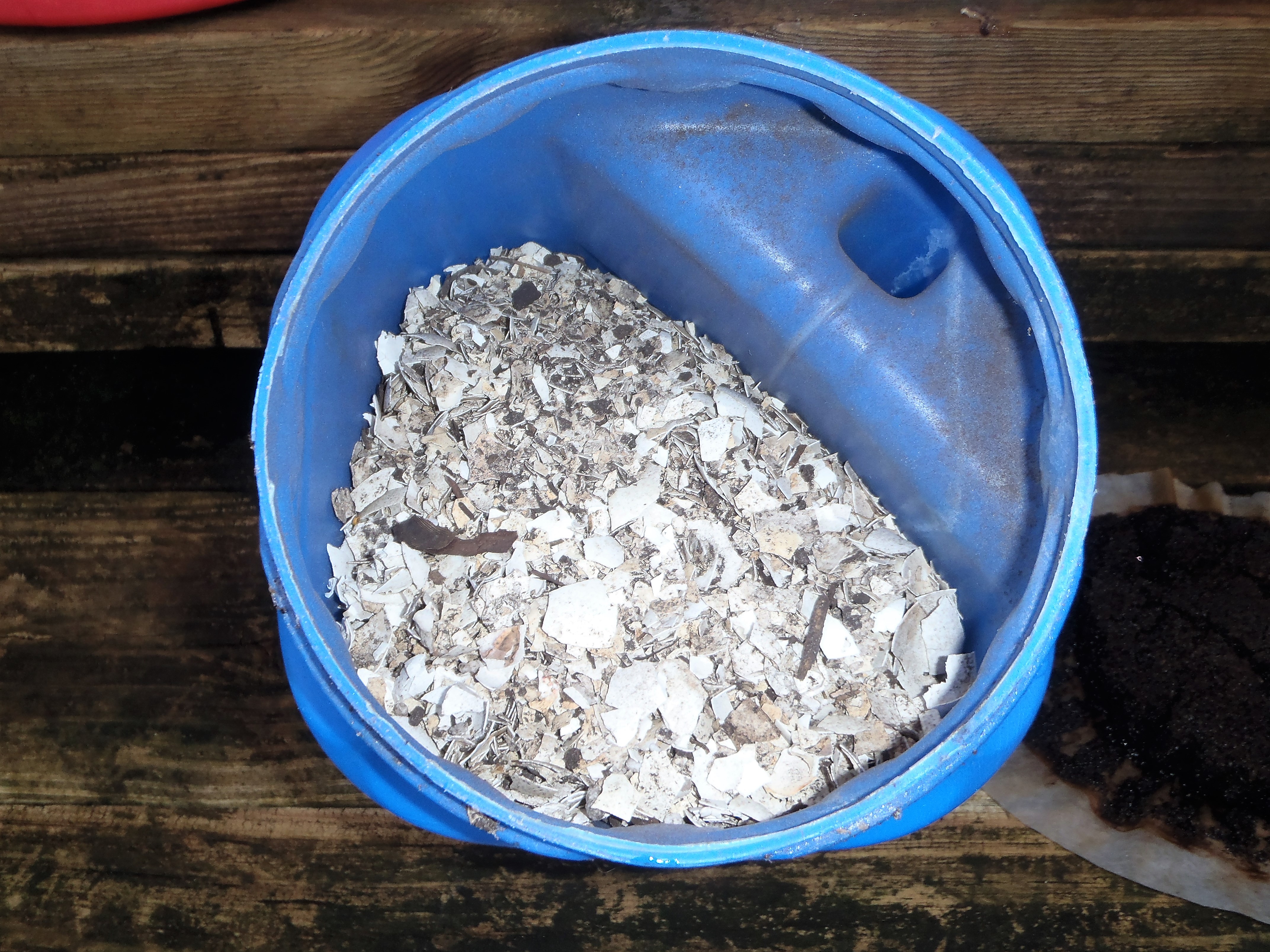
Egg Shells. I’ll take eggshells from the kitchen after they are used and place them in a plastic coffee container and crush them up with a piece of wood. As the eggshells dry out in the container, I will shake the container every so often to make sure that the eggshells are broken down into small pieces.

Magnesium. A Magnesium deficiency will cause leaves to become yellowish. Since I am not a real garden freak, I tend to add a little to each batch of garden soil that I’m in the process of mixing at the moment.
Note: Since I keep both magnesium and manganese in plastic coffee containers, granules in both containers have become liquid due to the very warm weather. So, now I just take the container and drip in a little liquid from each container. I’ll add less after reading that it is not necessary to go crazy with adding these ingredients.
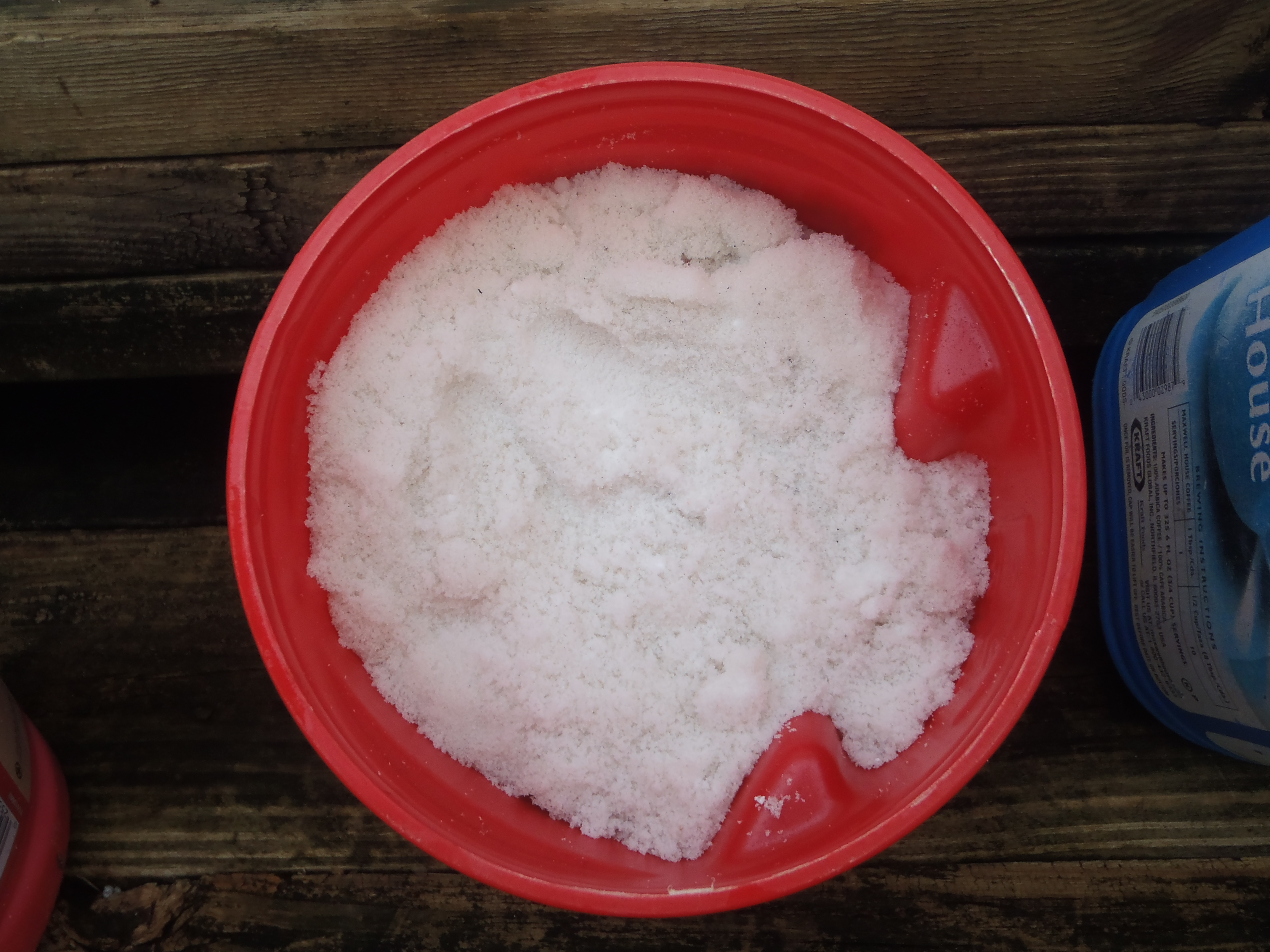
Manganese. A Manganese deficiency is similar to Magnesium but tends to show yellow in the leaves but shows on the young leaves of a plant.
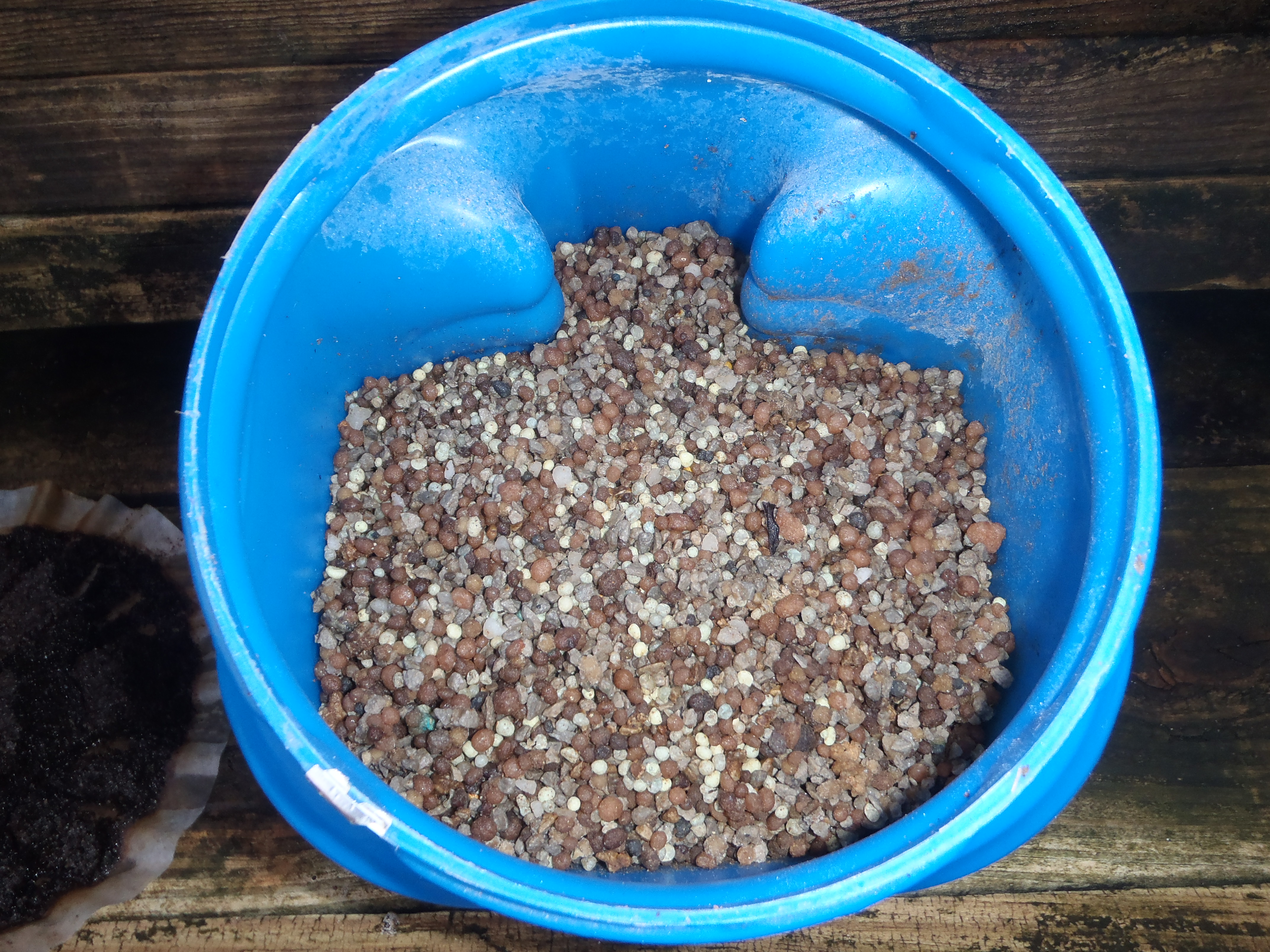
Palm tree fertilizer. Since most of the plants that I tended to deal with when I first became a garden freak were palms, I tended to grab palm fertilizer when I shopped at the garden center for supplies. I usually take a small fistful and add it to each batch.
pH Scale Note: The acidity or alkalinity of the soil can be measured via the pH Scale. Soil with a pH number below 7 is more acidic and a reading above 7 is more alkaline. An explanation on Acid and Alkalinity Soil – Modifying pH. Read the article to get a little information on acid and alkaline soils.
Most components that are added to the soil might usually increase or decrease the pH level of your soil. Most locations have a garden center that you can take your soil to in order to determine the pH level of your soil. Check with your local agricultural department.
One of the palm classes that I attended over the years at the local palm society had a speaker that showed us that a Heliconia plant for him was the greatest barometer tool for determining the health of your garden soil. If the leaves were dark green, your soil was in good shape. if the leaves were light green, you needed to add a soil supplement.
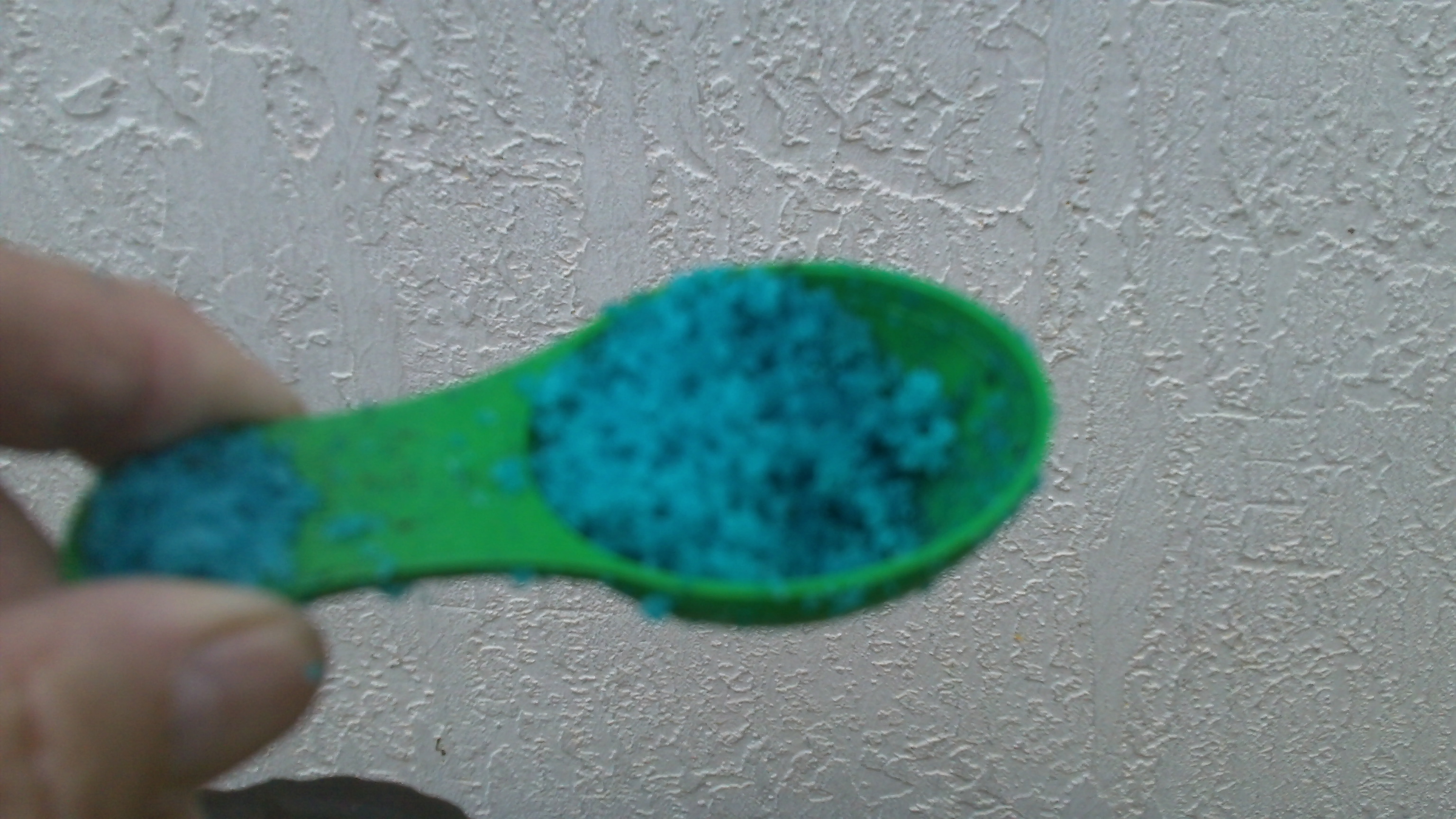
Plant Food. This is the most common plant food out there and I usually will take the blue granules and add to my perlite and use the combination shaken up in a plastic container and add this as an additive to my soil mixture.
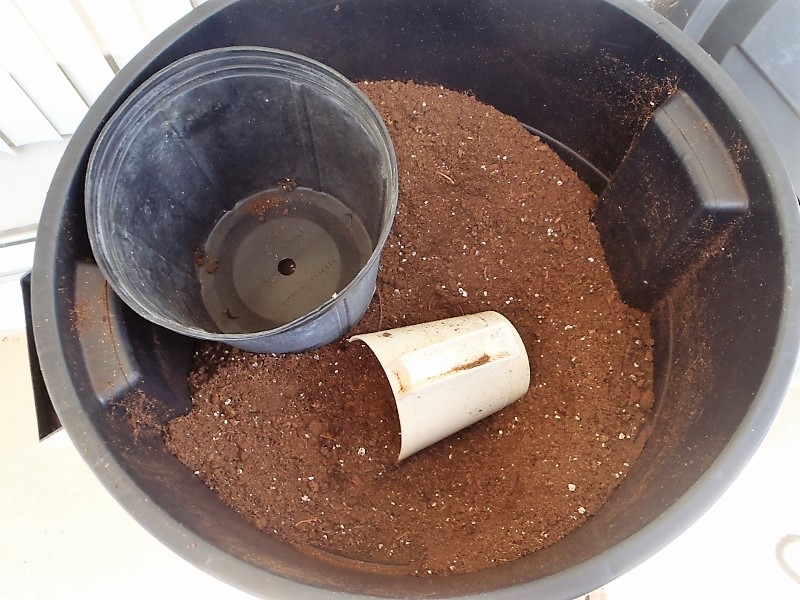
Canadian Sphagnum Peat Moss. This is one of the main ingredients in my soil mixture. I usually buy it in a large bale and keep it in a large plastic garbage container. Since my neighbor is a pool person, I have access to these 5 Gallons of plastic pool containers and keep my mulch in these containers to keep it dry and add the peat moss as needed for a soil mixture.
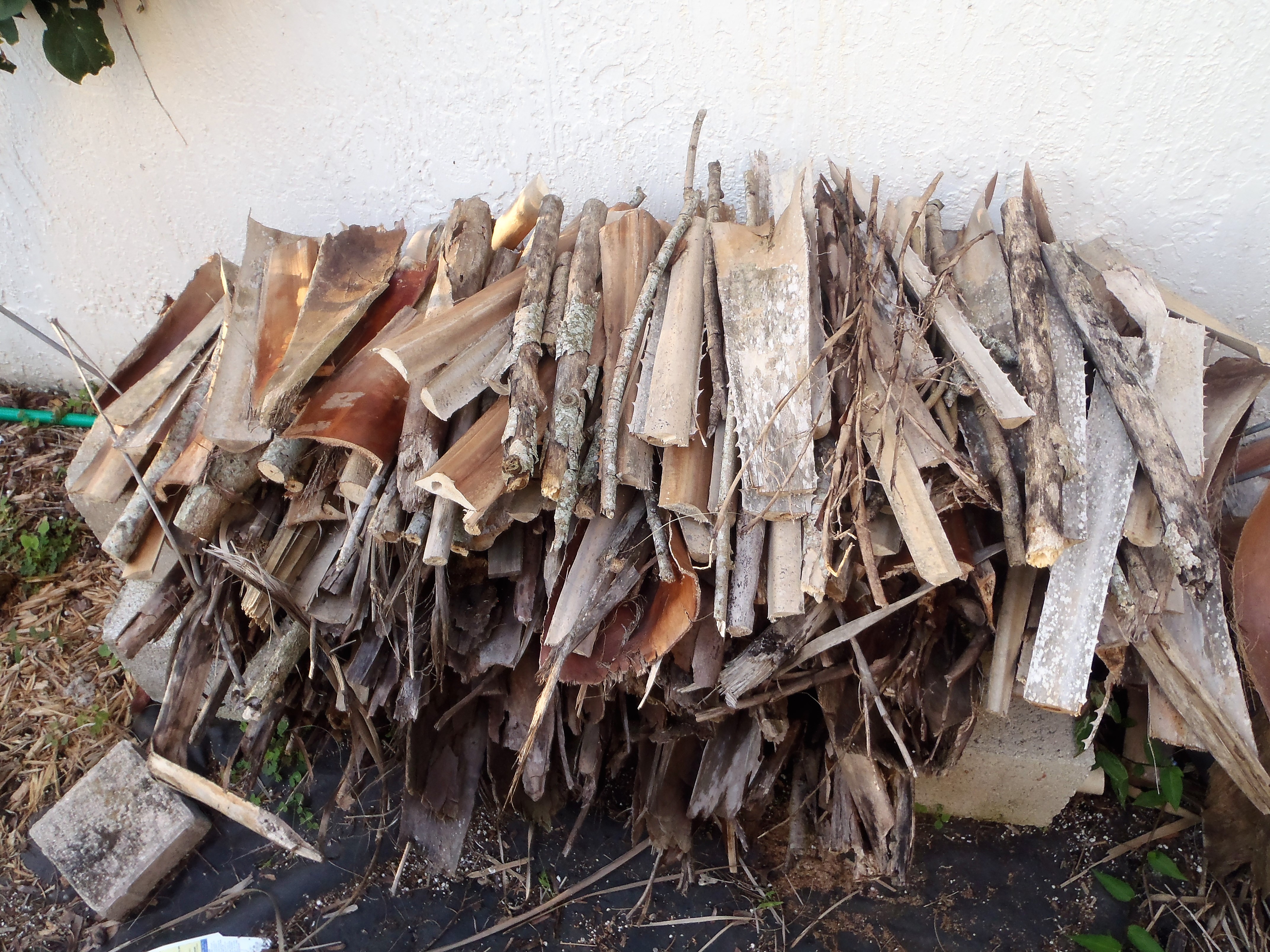
Fire Wood. After I use part of the palm debris for soil additives, I’ll take some remnants and add them to my firewood collection for a campfire with the little ones every once in a while. Also, the firewood comes in handy when we get a serious tropical disturbance and the electricity is knocked out, the firewood can be used in the campfire to do some temporary cooking.
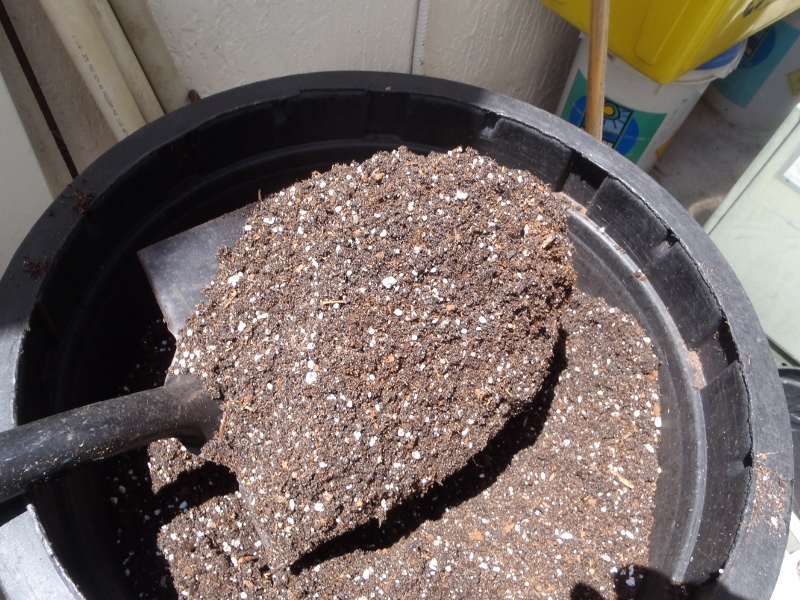
Soil Mixture. This is the soil after I have completed a soil mixture in the Dougherty Garden. the only trouble that I have with the soil mixture in the open is with the heavy rains during the tropical season but the soil dries out as soon as the sun hits the dirt.
If and when I can hook up the camera, I’ll do a video of the actual process of doing some of these tasks in making a soil mixture for the Dougherty Garden.
_______________________________________________________
Donate to: doherty167@yahoo.com at PayPal.com
________________________________________________________
Return to greendougherty.Blog
Blogger Facebook Flickr Instagram MySpace Reddit Tumblr Twitter
